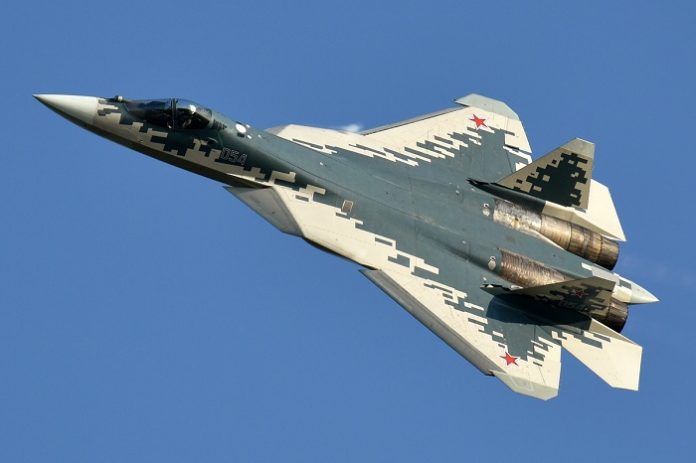
Russian plane-maker Sukhoi has developed a new single-engine stealth fighter. The jet, which Sukhoi apparently refers to as “Checkmate,” reportedly will make its debut at the MAKS air show in Moscow next week. Rostec, Sukhoi’s parent company, teased Checkmate in a video. A few days later, photos circulated online depicting what appears to be a tarp-draped Checkmate demonstrator at Ramenskoye airfield.
The teases have inspired frantic speculation about Checkmate’s design and capabilities. Samuel Bendett, an expert on the Russian military with the Center for a New American Security in Washington, D.C., said Checkmate is an export fighter—a relatively inexpensive, low-observable warplane that Sukhoi can sell to countries that the U.S. State Department won’t allow to buy the F-35.
“A number of nations already friendly to Russian military exports may line up for the state-of-the-art fighter jet,” Bendett said.
Whether Checkmate will succeed as an export commodity is an open question. The F-35 has cornered much of the stealth-fighter market. Meanwhile the South Korean KF-21, a lower-cost stealth fighter with export potential, could fly for the first time next year.
And there aren’t many obvious signals that countries that can’t get the F-35 or KF-21 are clamoring for an alternative. Chinese plane-maker Shenyang developed the J-31 stealth fighter mostly for export but, nine years after the type’s first flight, has yet to sell a single copy.
The Russian air force could acquire Checkmate, of course, much in the same way the Chinese navy reportedly aims belatedly to buy—some might say “rescue”—the J-31. In Russian service, Checkmate could complement the bigger, twin-engine Su-57, which first flew in 2010 and currently is in serial production at Sukhoi’s factory in the Russian Far East.
The Su-57—a heavy, complex plane—apparently is expensive. How expensive is unclear, but it’s worth noting that the smaller F-35, which Lockheed Martin produces at a rate of around 140 a year, costs around $100 million including the engine.
Moscow has ordered 78 Su-57s, but production has been slow and just a handful of the jets are in service. Checkmate, in theory, could complement the Su-57 and help the Russian air force to field a “high-low” mix of twin- and single-engine stealth fighters. That’s what the U.S. Air Force is doing—acquiring hundreds of F-35s to complement 180 or so twin-engine F-22s.
But don’t expect Checkmate—if it proves to be a capable plane and the Kremlin opts to buy it—to undermine the Su-57. The Russian air force is determined to get all 78 Su-57s. “It’s not softening its stance,” Bendett said.